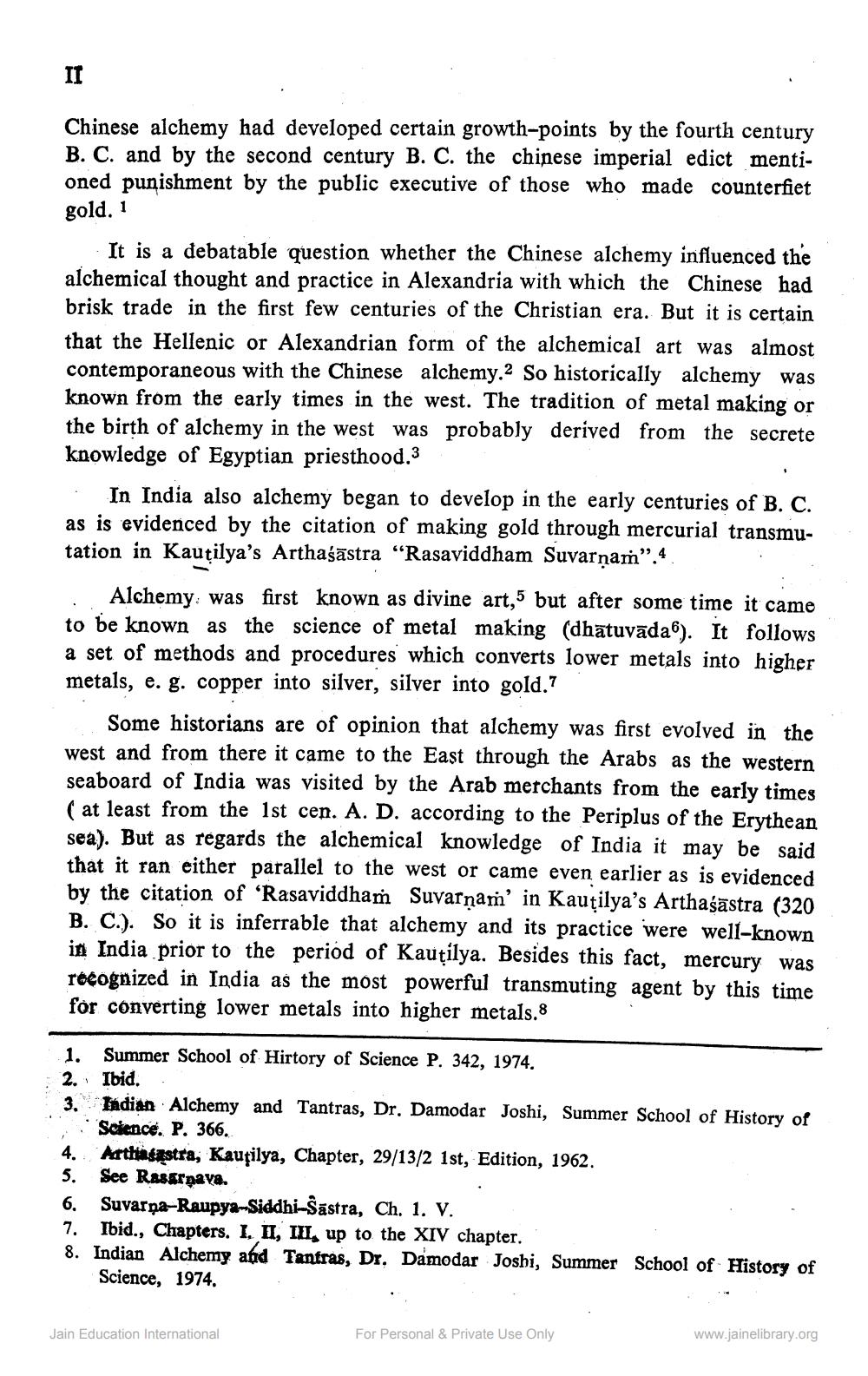Book Title: Suvarna Raupya Siddhi Shastra Author(s): J C Sikdar Publisher: L D Indology Ahmedabad View full book textPage 7
________________ Chinese alchemy had developed certain growth-points by the fourth century B. C. and by the second century B. C. the chinese imperial edict mentioned punishment by the public executive of those who made counterfiet gold. 1 It is a debatable question whether the Chinese alchemy influenced the alchemical thought and practice in Alexandria with which the Chinese had brisk trade in the first few centuries of the Christian era. But it is certain that the Hellenic or Alexandrian form of the alchemical art was almost contemporaneous with the Chinese alchemy. So historically alchemy was known from the early times in the west. The tradition of metal making or the birth of alchemy in the west was probably derived from the secrete knowledge of Egyptian priesthood.3 In India also alchemy began to develop in the early centuries of B. C. as is evidenced by the citation of making gold through mercurial transmutation in Kauțilya’s Arthaśāstra “Rasaviddham Suvarņam”.4. : Alchemy: was first known as divine art,5 but after some time it came to be known as the science of metal making (dhātuvāda6). It follows a set of methods and procedures which converts lower metals into higher metals, e. g. copper into silver, silver into gold.? Some historians are of opinion that alchemy was first evolved in the west and from there it came to the East through the Arabs as the western seaboard of India was visited by the Arab merchants from the early times ( at least from the 1st cen. A. D. according to the Periplus of the Erythean sea). But as regards the alchemical knowledge of India it may be said that it ran either parallel to the west or came even earlier as is evidenced by the citation of 'Rasaviddham Suvarnam' in Kautilya’s Arthaśāstra (320 B. C.). So it is inferrable that alchemy and its practice were well-known in India prior to the period of Kautilya. Besides this fact, mercury was recognized in India as the most powerful transmuting agent by this time for converting lower metals into higher metals.8 1. Summer School of Hirtory of Science P. 342, 1974. 2. Ibid. . 3. Indian Alchemy and Tantras, Dr. Damodar Joshi, Summer School of History of Science. P. 366. 4. Marthingąstra, Kautilya, Chapter, 29/13/2 1st, Edition, 1962. 5. See Rasarnava. 6. Suvarna-Raupya-Siddhi-Sastra, Ch. 1. V. 7. Ibid., Chapters. I, II, III, up to the XIV chapter. 8. Indian Alchemy and Tantras, Dr. Damodar Joshi, Summer School of History of Science, 1974. Jain Education International For Personal & Private Use Only www.jainelibrary.orgPage Navigation
1 ... 5 6 7 8 9 10 11 12 13 14 15 16 17 18 19 20 21 22 23 24 25 26 27 28 29 30 31 32 33 34 35 36 37 38 39 40 41 42 43 44 45 46 47 48 49 50 51 52 53 54 55 56 57 58 59 60 61 62 63 64 65 66 67 68 69 70 71 72 ... 434
